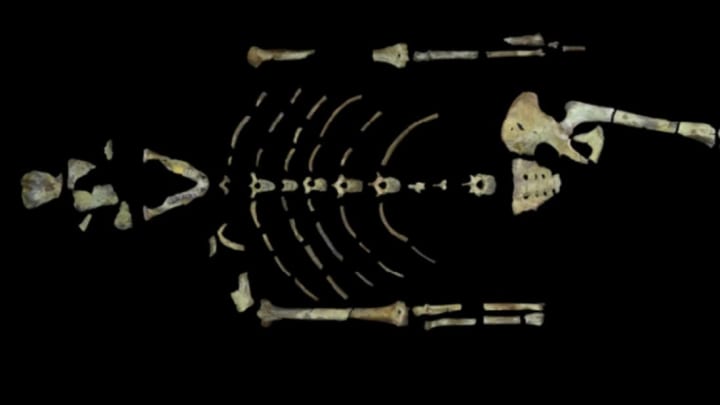Our Early Human Ancestor "Lucy" Spent Plenty of Time in the Trees

We started from the branches; now we’re here. Researchers say the remains of the human ancestor nicknamed "Lucy" include heavily built arms and weaker legs more like those of tree-dwelling chimpanzees than like those of modern humans. They published their findings in the journal PLOS One.
Lucy’s remains have captivated scientists since they were first unearthed in Ethiopia in 1974. She and other Australopithecus afarensis were the first human ancestors to walk upright. Aside from this, Lucy’s day-to-day life has remained something of a mystery, as has her death.
Some researchers think she met her demise after falling out of a tree. A controversial study published earlier this year concluded that a fracture in Lucy’s upper arm could have been caused by a fall from a great height. Project leader John Kappelman said Lucy’s transitional existence may have been her downfall. “It may well have been the case that adaptations that permitted her to live more efficiently on the ground compromised her ability to move safely in the trees — and may have predisposed her kind to more falls,” Kappelman told Science magazine.
Not everyone agreed. “Terrestrial animals like antelopes and gazelles, elephants and rhinos and giraffes — all these bones show very similar fracture and breakage patterns as Lucy,” paleoanthropologist Don Johanson, a discoverer of Lucy, noted in Science. “You can be sure they didn’t fall out of trees.”
Now, Kappelman and his colleagues are picking up the other end of the story. Computed tomography (CT) scans of Lucy’s bones showed greater density in her arms than in her legs, which suggests she was using her upper limbs far more often.
"It is a well-established fact that the skeleton responds to loads during life, adding bone to resist high forces and subtracting bone when forces are reduced," Kappelman said in a statement. "Tennis players are a nice example: Studies have shown that the cortical bone in the shaft of the racquet arm is more heavily built up than that in the nonracquet arm."
Kappelman believes his team’s new findings support his earlier hypothesis. "It may seem unique from our perspective that early hominins like Lucy combined walking on the ground on two legs with a significant amount of tree climbing," says Kappelman, "but Lucy didn't know she was 'unique'—she moved on the ground and climbed in trees, nesting and foraging there, until her life was likely cut short by a fall—probably out of a tree."